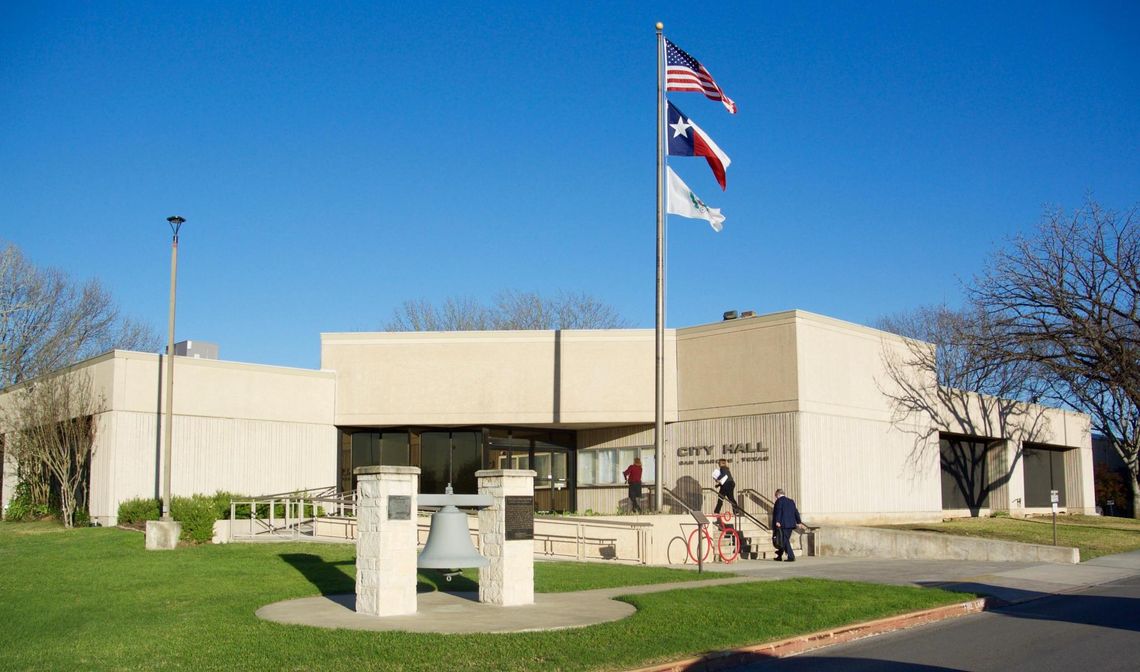During Tuesday's San Marcos City Council meeting, the council held a discussion related to officer camera footage, including but not limited to body-worn camera and dashboard camera footage.
“This agenda item originated from community conversations regarding recent police happenings and things like transparency,” Councilmember Alyssa Garza said. “I think our general sense that the community is not, I think there’s a sense of confusion among our community and within even our council regarding dissemination of information generally regarding policing but more recently, community members have been asking why we do not share out body-worn camera footage.”
Garza and Councilmember Maxfield Baker questioned whether or not there was a written policy regarding body camera footage. San Marcos Chief of Police Stan Standridge went on to provide clarity.
“So, the city attorney provided you all with really good legal counsel regarding this matter and for the benefit of the citizens who are listening, he explained to you that the governing statute is the occupation’s codes specifically, chapter 1701,” Standridge said. “In state law, which the occupation’s code is, it enumerates reasons you can and cannot release video and you all read that and you know that most of the provisions prohibit the release of video.”
Standridge further went on to explain that there is a scenario where an agency, such as SMPD, can release video as long as it’s in the best interest of the community. Standridge also explained that the release of video footage could jeopardize the due process for the accused and hurt the prosecution for purposes of the victim.
“If we release these videos before the grand jury review and you have as much as four people watch the videos, which in Hays County let’s be honest, most of these grand jurors are going to probably watch these videos when they’re released because they’re sensational, they’re released for a reason,” Standridge said. “Then you are going to taint that small body of people and all you have to do is taint four and now the district attorney can't even present the case to the grand jury for review.”
While releasing video footage could significantly impact the court process, there is still a chance that video footage can eventually be released.
“It’s just a delay of the video, it's not an absolute ‘no it’s never going to be released,’ it’s a delay of the video until the matter has been presented to the grand jury,” Standridge said. “Now if there’s an indictment, meaning that the person is going to be openly going to be criminally prosecuted, then we’re going to continue to hold on to that video because we sure don’t want to bias a petit jury.”
Following the explanation, Garza asked why there wasn’t an internal document that outlines the release of footage for community transparency.
“I think that just generally it would be helpful that we have an internal policy that not just outlines maybe rationale, a blurb about the state guidelines and policies but also just things that the community has been asking about,” Garza said. “Even like, in terms of like, internal policies such as regarding record retention.”
Standridge went on to say that SMDP does have a policy in correlation with the state statute. Garza expressed frustration about not receiving the policy after asking about it months prior.
“As leader of the community, it would be nice to see something, to visually look at it and see what we’re dealing with as leaders in the community it’s like okay, this is what we’re going to be hearing about you know, how do we prepare ourselves to be able to explain what we saw, to be able to explain,” Councilmember Shane Scott said. “Not necessarily giving away the details or anything like that but to be able to make policy based on what we saw.”
Standridge explained that videos could be viewed by public leaders as long as they were adjudicated, but not before.
Councilmember Baker then brought the topic of distinction between police camera footage and cell phone footage from a bystander and how the footage from the cell phone has the potential of tainting a jury.
Standridge explained cell phone footage is not government property, therefore cannot be taken up. However, in the case that someone does capture footage that the police department considers evidence, the phone could be seized and a search warrant could be issued to extract evidence, then return the phone.
Mayor Jane Hughson also posed a question in regard to filming on private property such as a house, Standridge answered that the protocol would be the same.
Following this discussion, the council is expected to receive the San Marcos Police Department policy regarding body camera footage from Standridge and are expected to review it.
For the complete discussion and full meeting, visit san-marcos-tx.granicus.com/ViewPublisher.php?view_id=9.









